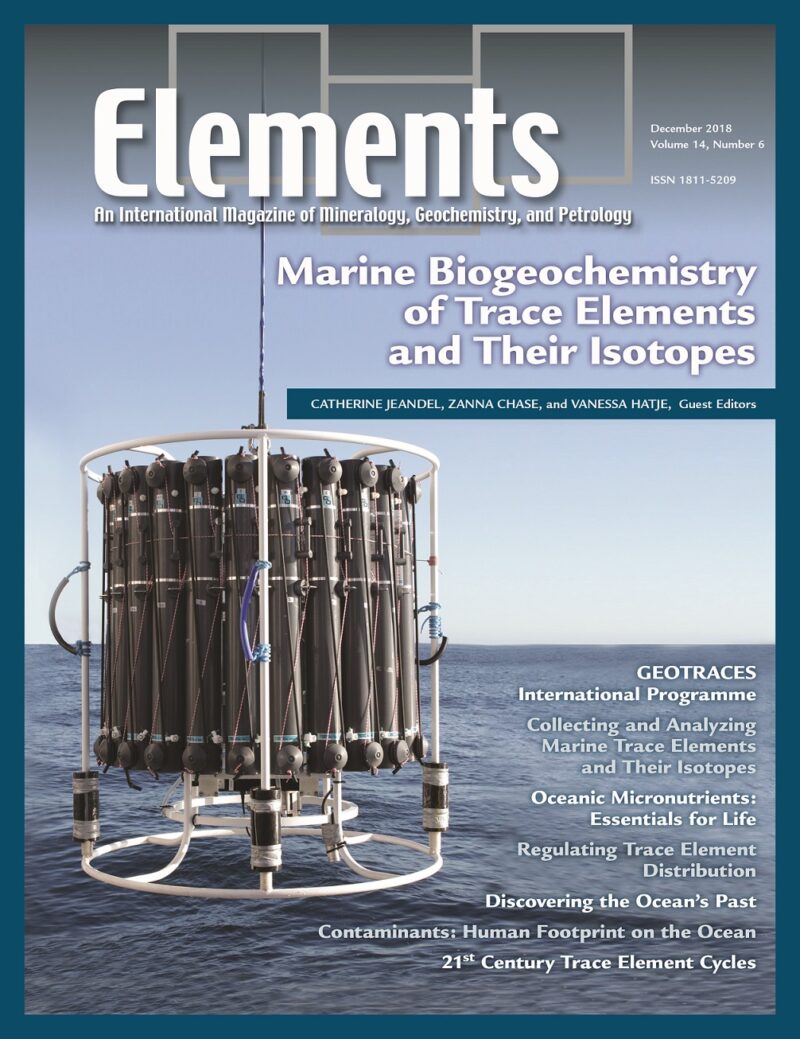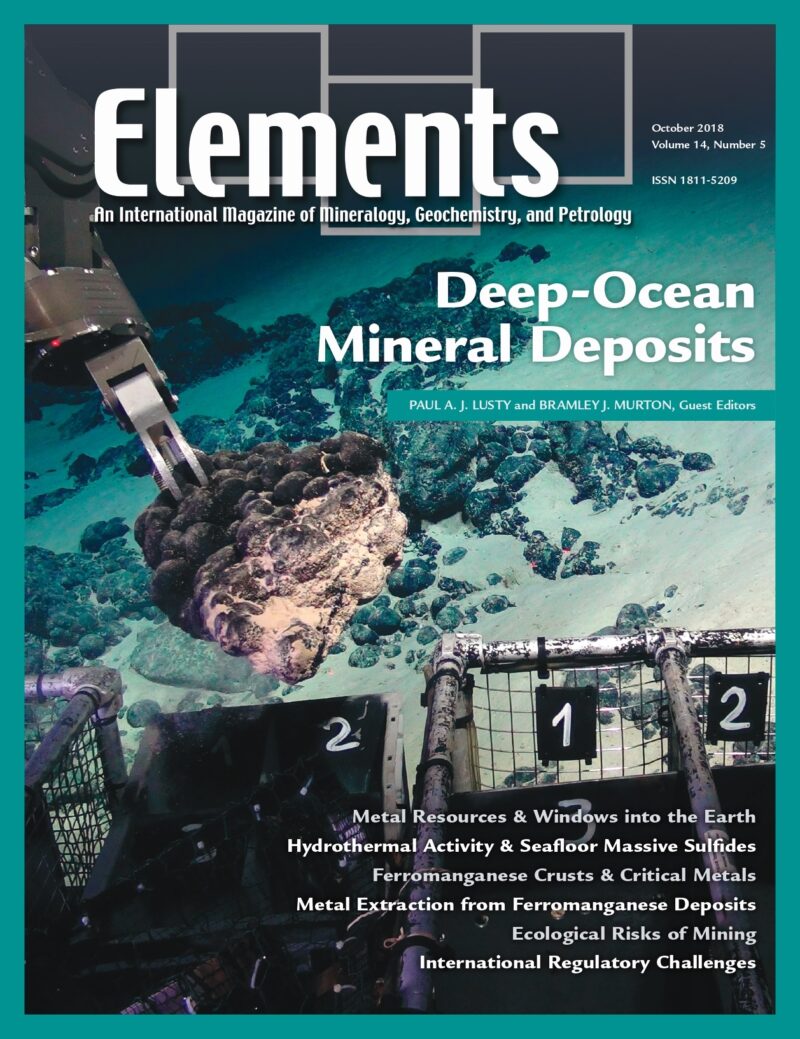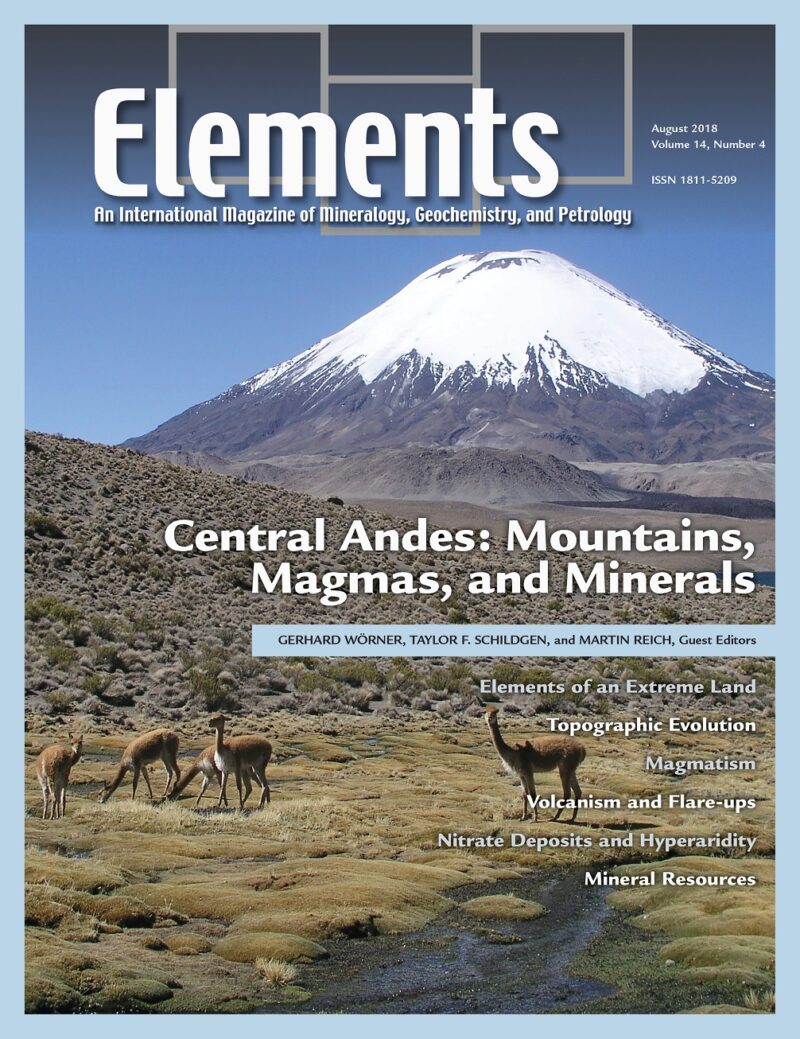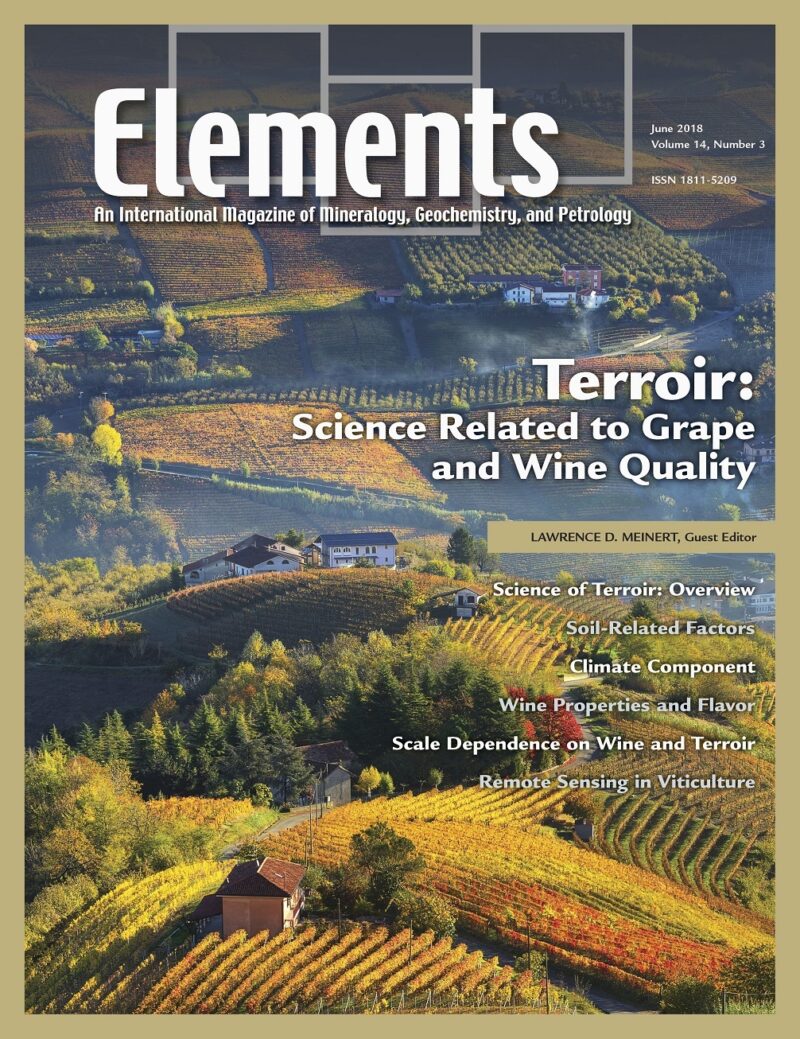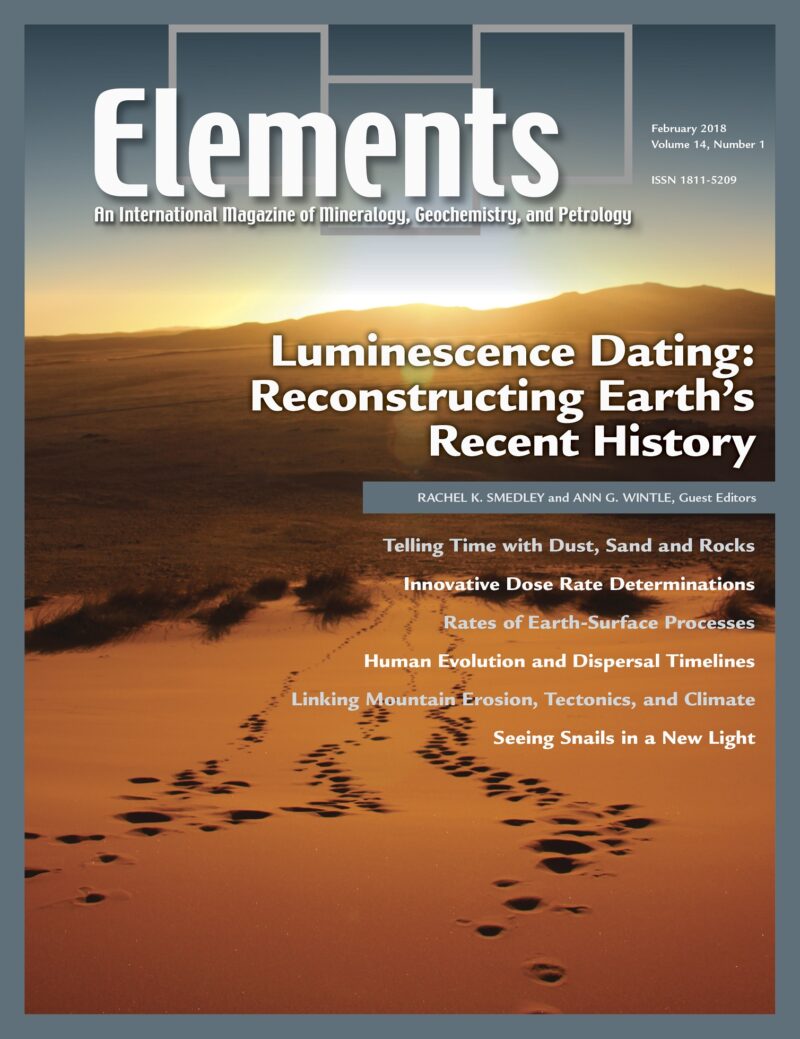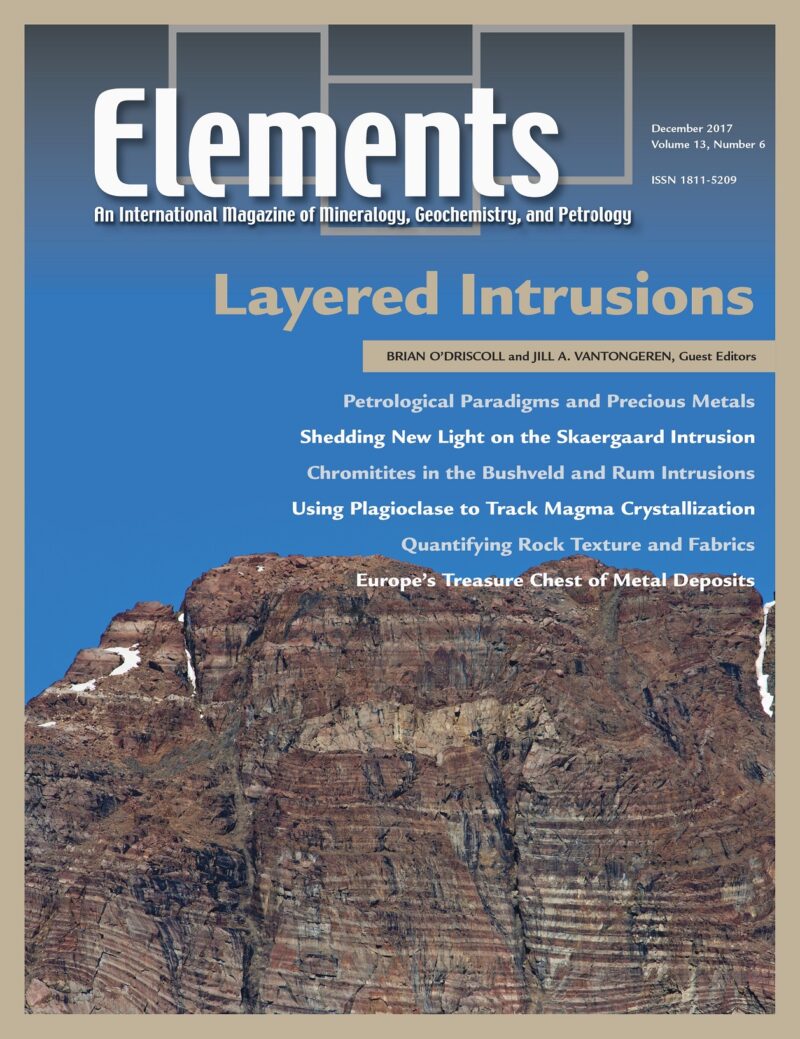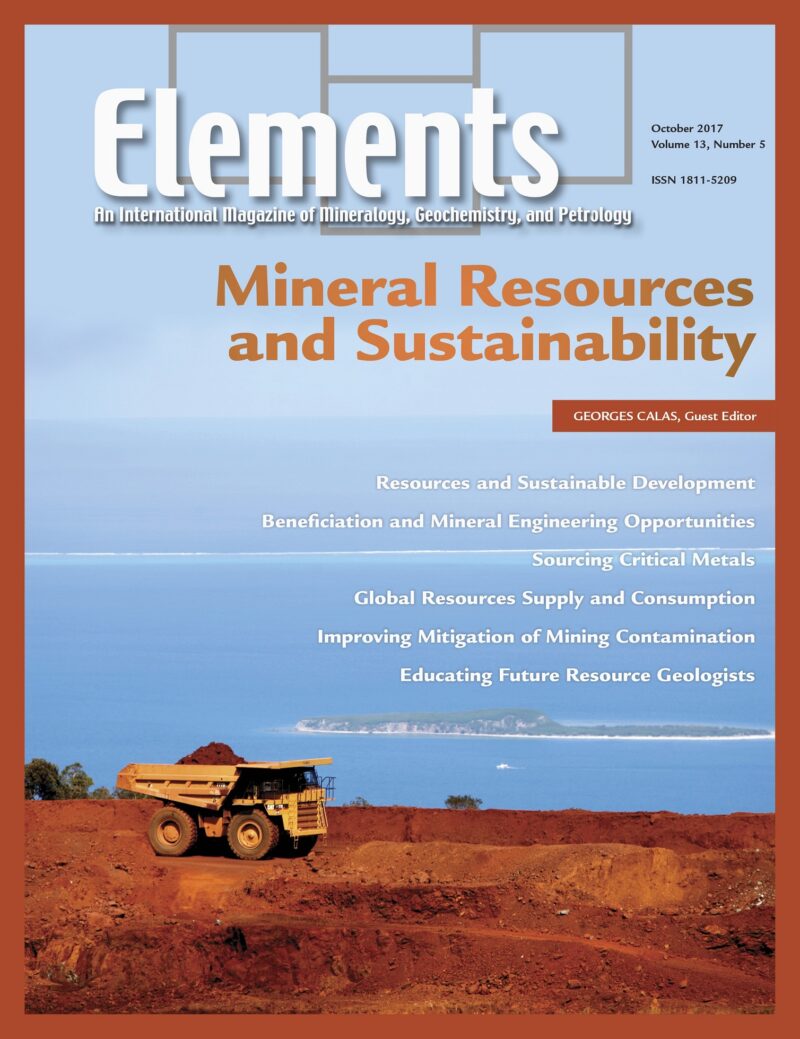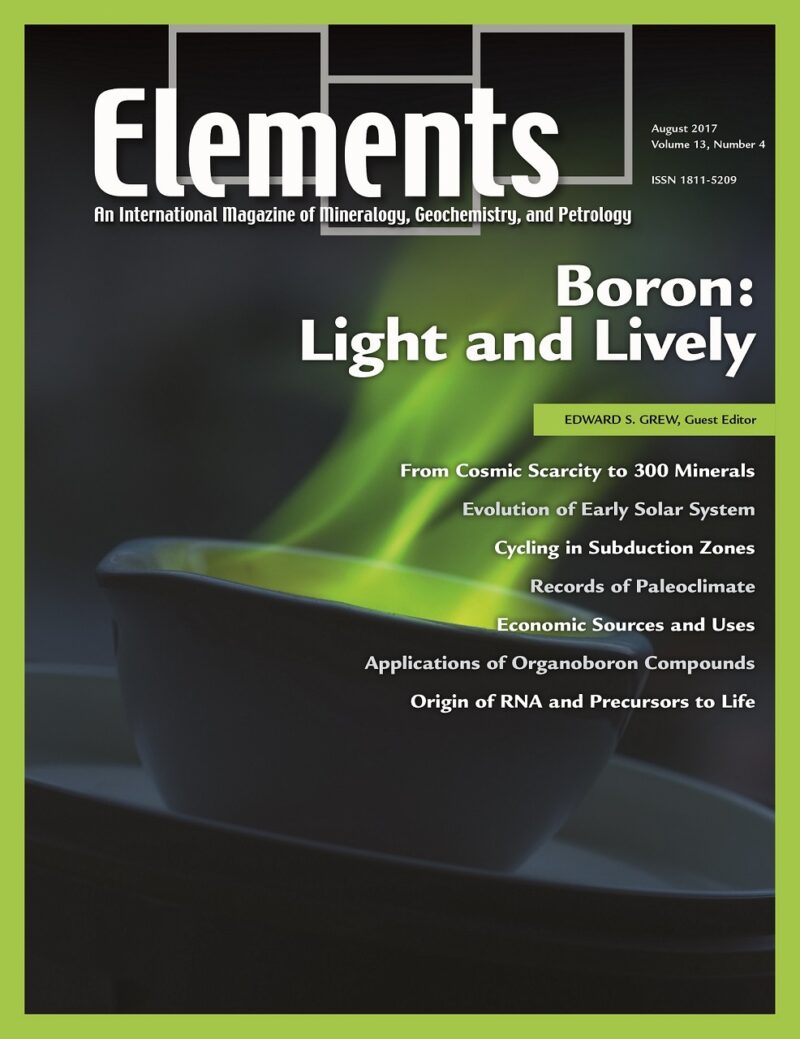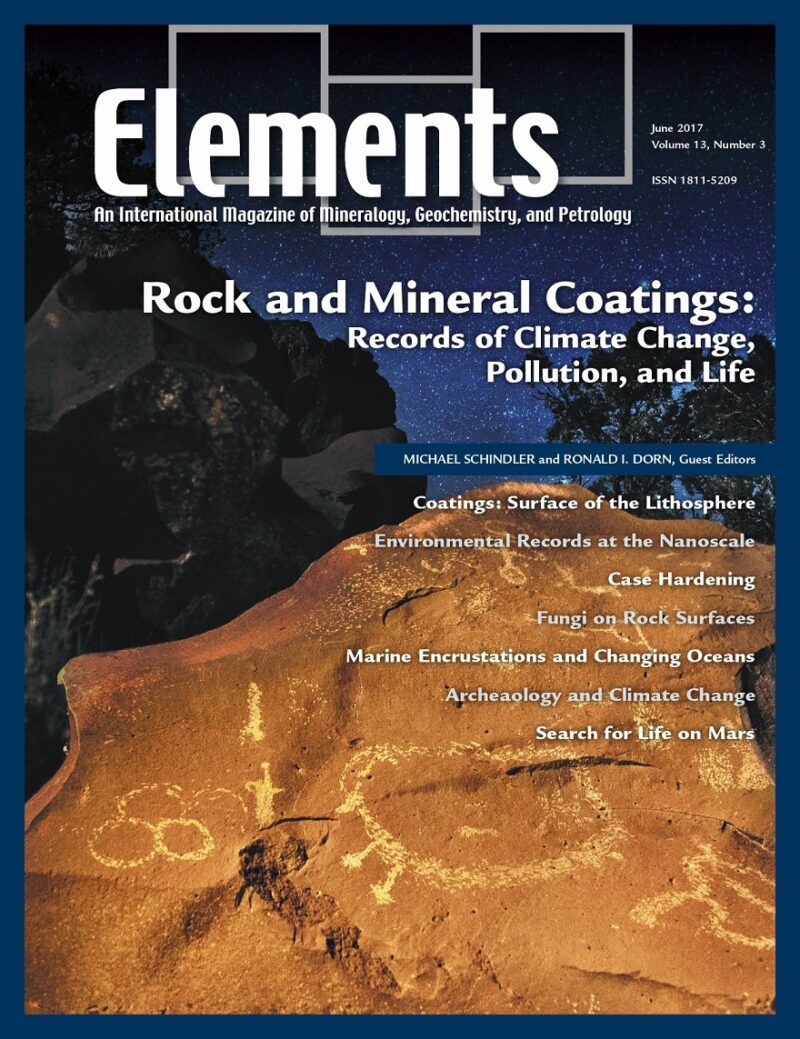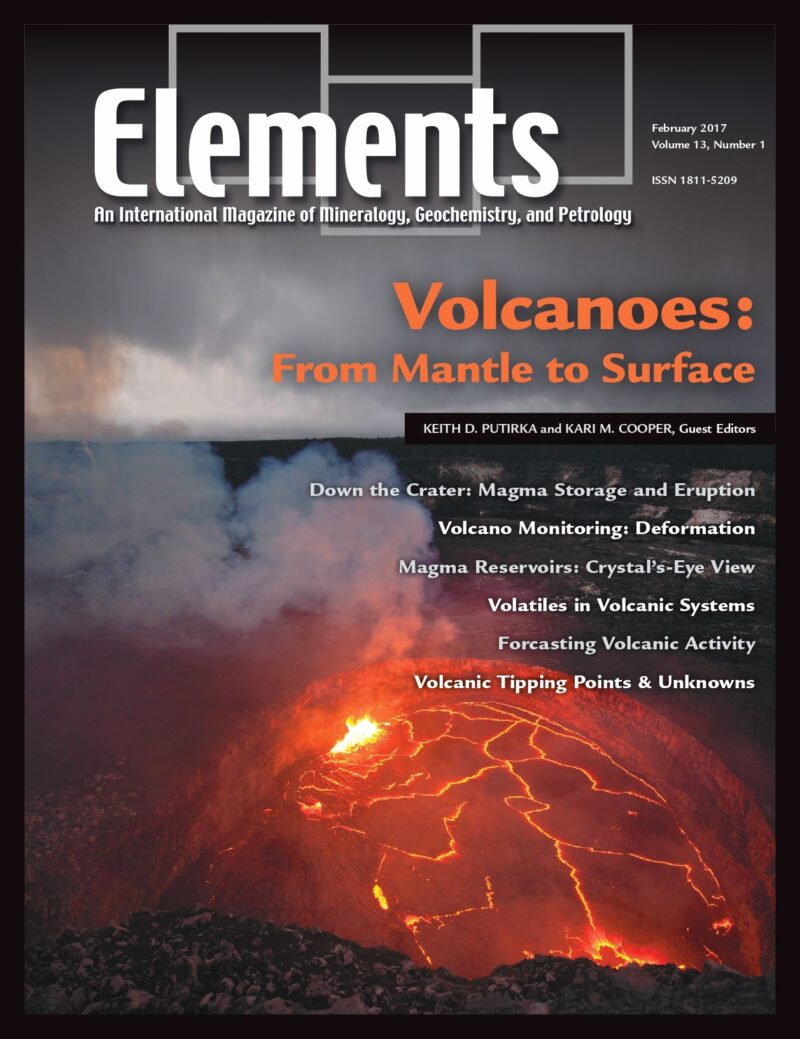-
Marine Biogeochemistry Of Trace Elements And Their Isotopes, December 2018, Vol. 14, No. 6
$20.00The field of marine geochemistry is exploding these last two decades. During the 1980s and 1990s, the scientific community developed a geochemical toolbox to study key ocean processes, based on the concentration and isotopic composition of trace elements.
-
Deep-Ocean Mineral Deposits, October 2018, Vol. 14, No. 5
$20.00Significant deposits of metal-rich minerals are known to exist on the deep-ocean floor, in some instances exceeding global land-based resources. In recent years, advances in understanding and technology coupled with an evolving regulatory regime have resulted in growing interest in mining these deposits.
-
Central Andes: Mountains, Magmas, And Minerals, August 2018, Vol. 14, No. 4
$20.00The Central Andes in South America are a first-order geological structure on our planet of an active continental margin. The link between subduction-related magmatism and processes and timing of uplift and volcanism shaped the Andean Cordillera and provides unique examples of the andesite magma generation during passage through thickened crust.
-
Terroir – Science Related To Grape And Wine Quality, June 2018, Vol. 14, No. 3
$20.00This special issue explores the physical environment that shapes the character and quality of wine, ranging from geology and soils to viticulture and climate. It also discusses some of the technological advances such as drones, remote sensing, and precision agriculture, that are revolutionizing the production of fine wine.
-
Comets, April 2018, Vol. 14, No. 2
$20.00It is now possible, for the first time, to synthesize what has been learned regarding the mineralogy, geochemistry, and geology of comets from the Giotto, Vega, Stardust, Stardust NEXT, Deep Impact, and Rosetta missions to comets Halley, Wild 2, Borrelly, Tempel 1, and Churyumov– Gerasimenko. Articles in this issue describe the nature of cometary inorganic phases, volatiles, notable water, and organics.
-
Luminescence Dating: Reconstructing Earth’s Recent History, February 2018, Vol. 14, No. 1
$20.00Luminescence dating is a geochronological tool used to determine the timing of sediment burial, pottery firing, mountain evolution, mineral formation and the exertion of pressure. The luminescence dating technique covers a large age range from modern-day to hundreds of thousands of years using conventional methods, or even up to millions of years according to recent developments.
-
Layered Intrusions, December 2017, Vol. 13, No. 6
$20.00For more than 50 years, layered mafic-ultramafic intrusions have served as natural laboratories for studying magma chamber processes and magmatic differentiation. Further enhancing our understanding of layered intrusion formation will yield valuable insights into the solidification of magmatic systems, the formation of precious metal deposits, and the timescales over which substantial crust-forming episodes occur.
-
Mineral Resources And Sustainable Development, October 2017, Vol. 13, No. 5
$20.00Mineral resources are a vital part of any economy, modern or ancient. Since the birth of civilization, man has used these resources for pigments, metals, glasses, ceramics, cements and much more.
-
Boron: Light And Lively, August 2017, Vol. 13, No. 4
$20.00Fifth in the periodic table, boron is a “light” element whose origin has puzzled astronomers because it is not created in stars. It is “lively”, being an essential element for plants, and having medicinal proper ties, which has stimulated synthesis of organic compounds containing boron.
-
Rock And Mineral Coatings, June 2017, Vol. 13, No. 3
$20.00Chemical and/or biological processes can produce coatings on the surfaces of rocks and minerals. These coatings form at the interface between the lithosphere, biosphere, and atmosphere in a diverse range of environments, such as common soils, deserts, volcanic weathering environments, smelter-impacted areas, Antarctica and glaciated environments, and have even been found on Mars.
-
Sulphides, April 2017, Vol. 13, No. 2
$20.00Despite the bulk silicate Earth only containing 250 parts per million of sulphur, sulphide minerals and liquids have a powerful impact on the behaviour and fractionation of a wide range of elements in the Earth’s crust and underlying mantle. According to the V.
-
Volcanoes: From Mantle To Surface, February 2017, Vol. 13, No. 1
$20.00Volcanoes have played a large role over Earth’s history in building the crust, contributing to atmospheric formation, and transferring heat and mass from the interior to the surface. They are also capable of massive disruption of the surface environment and to human civilizations.

